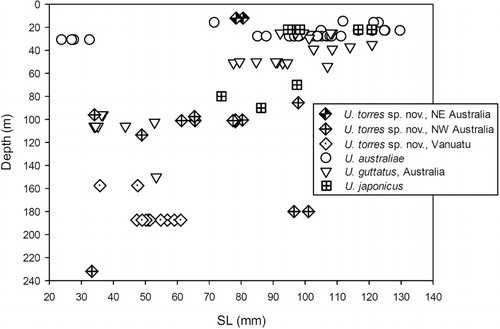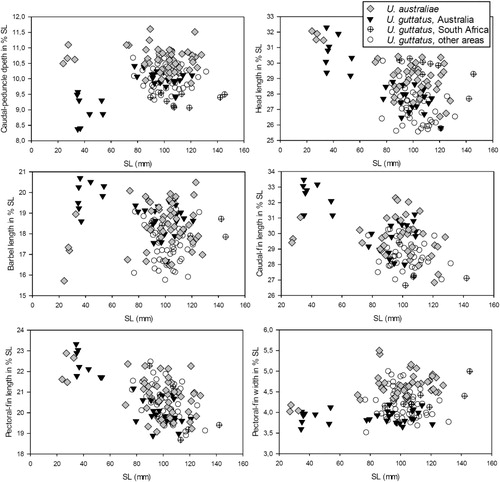Figures & data
Table I. Measurements and counts, for specimens of 65 mm SL and larger, of Upeneus torres sp. nov., U. australiae, U. guttatus, and U. japonicus.
Table II. Measurements and counts, for specimens smaller than 65 mm SL, of Upeneus torres sp. nov., U. australiae, U. guttatus, and U. japonicus.
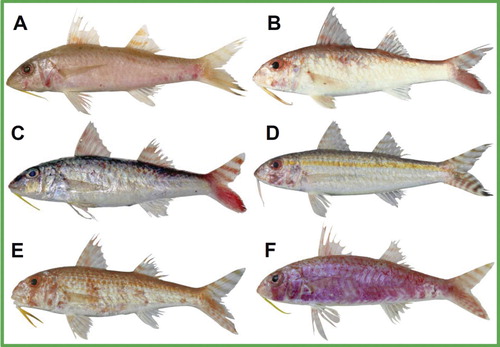
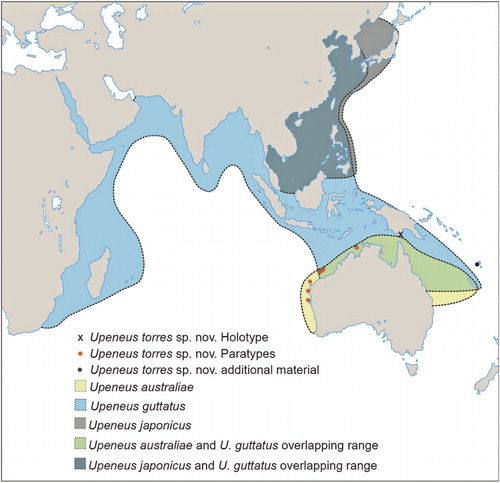
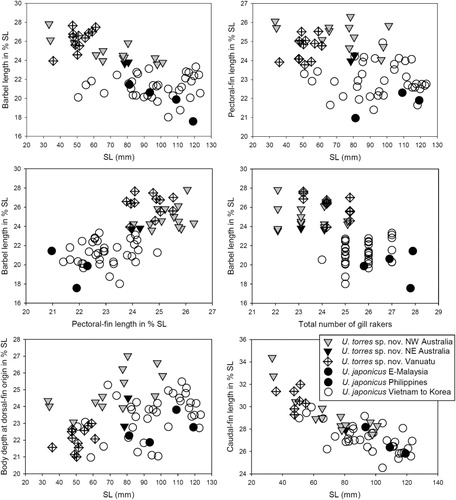
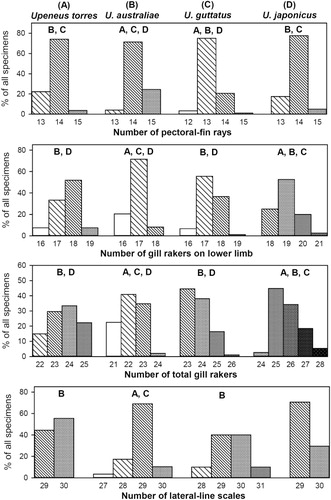
Supplemental material

